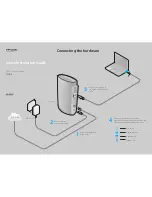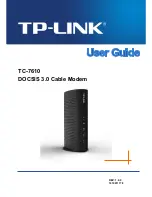
5 PTC-Firmware
5.4
Simultaneous STBY mode
In the STBY condition, the PTC automatically knows if it is called in AMTOR or
PACTOR, answering in the respective mode. It is possible to use the
ARX
command to
suppress the AMTOR reaction (In ARQ as well as FEC).
The
SCS
-PTC offers the possibility to receive AMTOR FEC and NAVTEX
transmissions from the STBY condition. For this, the
BC
parameter must be set to 1. The
reading of AMTOR FEC and NAVTEX can be inhibited with the
ARX
command,
independently from
BC
.
5.5
Specialities of the PTC-IIex
As the PTC-IIex is a single port unit some items have to be cared of when choosing
Packet-Radio operation or the HF modes, especially that simultaneous operation of
Packet and the HF modes in not possible.
In terminal mode the command-prompt (
cmd:
,
pac:, aud:
) indicates if the PTC-IIex is
available for the HF modes, or if the DSP is actually programmed for Packet-Radio
operation (there is only one exception, described below). If the
pac:-
menu is choosen out
of the STBY condition (
cmd:
) then the DSP is always reprogrammed for Packet-Radio
operation and the prompt takes the form
pac:
. However, it is always possible from the
cmd:-
menu to pass a command the the Packet-Radio side (without getting the DSP
reprogrammed) by preceeding the command with
pac.
cmd:
PAC
C
DB0GV <RETURN>
This command out of the
cmd:-
menu leads to a connect attempt to DB0GV on Packet-
Radio. This command is only accepted if there is
no
PACTOR or AMTOR connect
already running on HF, otherwise an error-message is displayed. When the command is
accepted, automaticly the DSP is switched to Packet-Radio operation and the
pac:-
menu
is activated.
In fact, the PTC-IIex automaticly loads the required DSP code dependent on the
requirement of the recent command. At entry of the
Connect
command the user needs
not to care in which condition the DSP modem currently is. But when the user tries to
establish a Packet-Radio connect while a PACTOR connect is in progress the PTC-IIex
gives an error-message. Same in the opposite case, when a Packet-Radio connect exists
and the user tries to leave the
pac:-
menu with quit, this will also cause an error message.
However, it is possible to enter the
pac:-
menu when a PACTOR connect is running, but
in this case the DSP is not reprogrammed and the Packet-LED will not light. That means,
with a running connect on the HF side it is possible to change parameters being valid for
Packet-Radio. Only a
Connect
will be rejected in this case.
Although the PTC-IIex is limited for being a single port unit, it is very flexible also when
operating in Hostmode. Same as in the terminal mode it
automaticly
selects the
appropriate modem DSP code, dependent on the connect attempt entered by the user. If
one tries to establish simultaneous connects on HF and Packet-Radio an error message is
displayed.
As a special feature the PTC-IIex also accepts the commands
PR
and
PT
in hostmode to
provide the possibility to change the mode without connect attempt. This is for example
necessary to receive connects in the desired mode. It is useful to implement one of the
commands into the startup file of the hostmode-program, to ensure the prefered PTC-IIex
21
Summary of Contents for PTC-IIex
Page 14: ...List of Figures and Tables XII...
Page 30: ...3 Installation 16...
Page 108: ...7 Audio 94...
Page 126: ...8 FAX 112...
Page 173: ...12 SYStest 159...
Page 183: ...14 Circuit Description 169...
Page 195: ...15 Basics 181...
Page 201: ...B Technical Data 187...
Page 202: ...C Layout Appendix C 19 Layout B 1 Motherboard Figure B 1 Motherboard 188...
Page 203: ...C Layout 189...
Page 215: ...Index 202...
















































